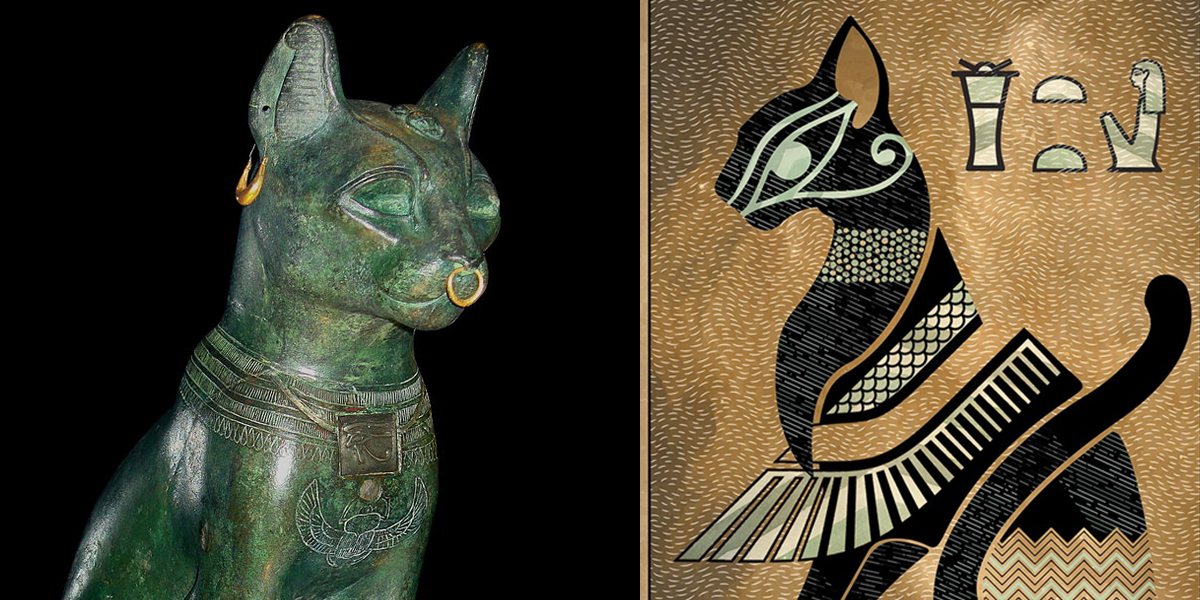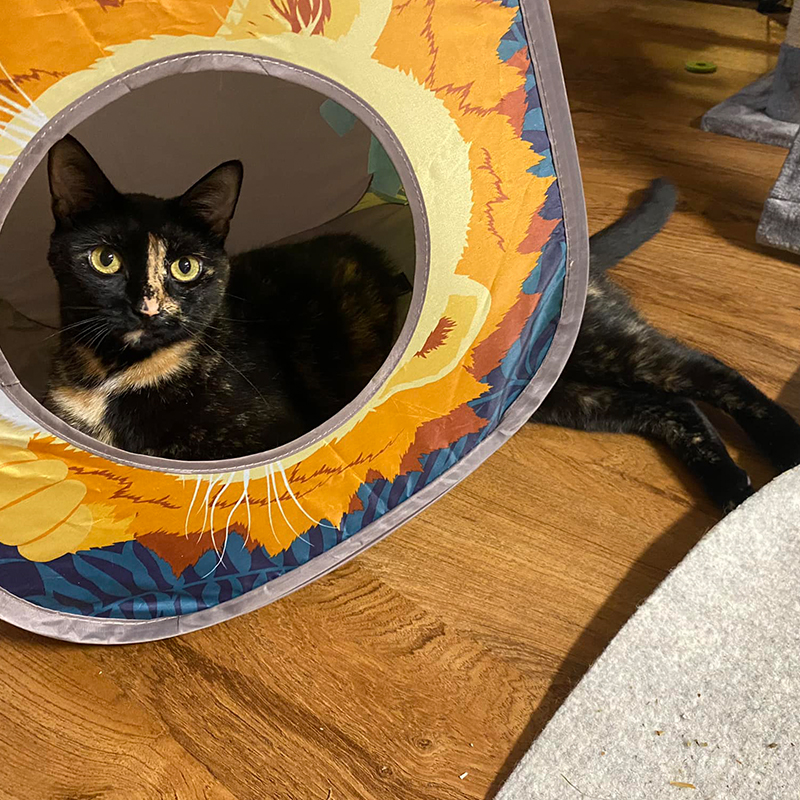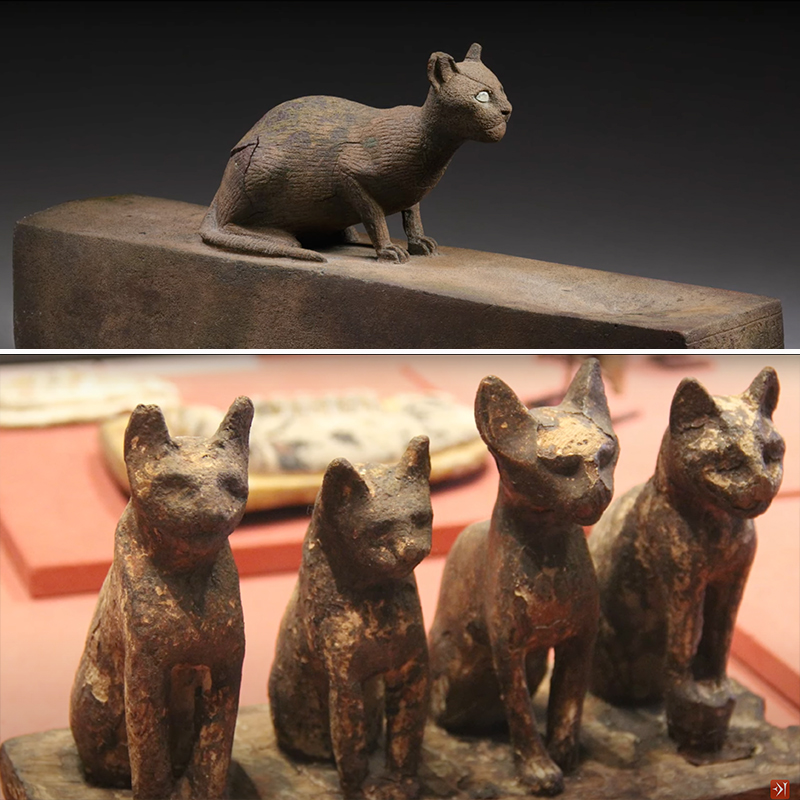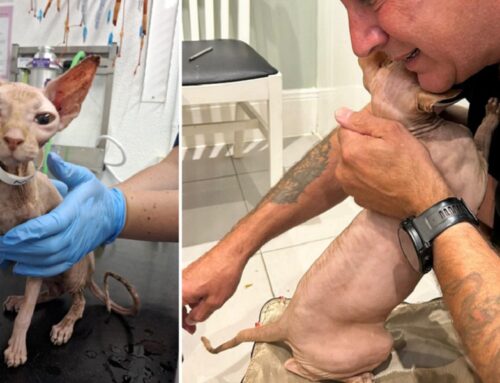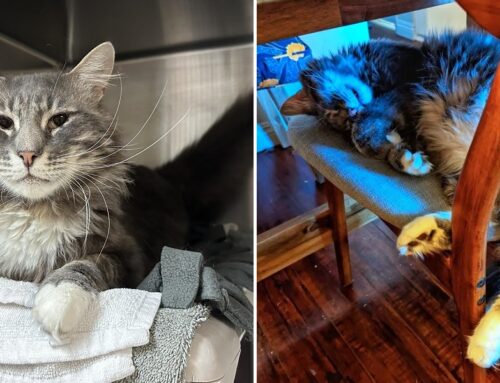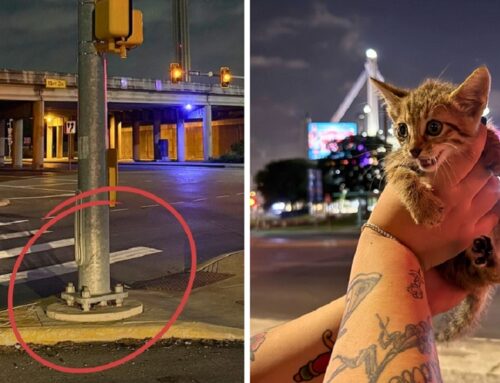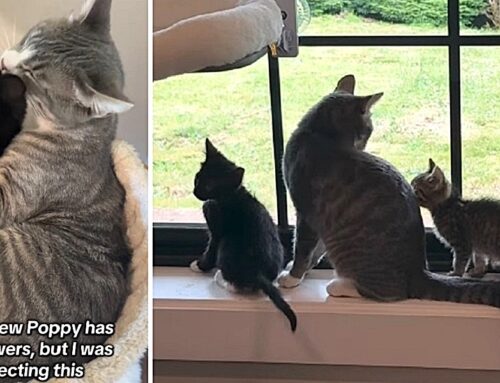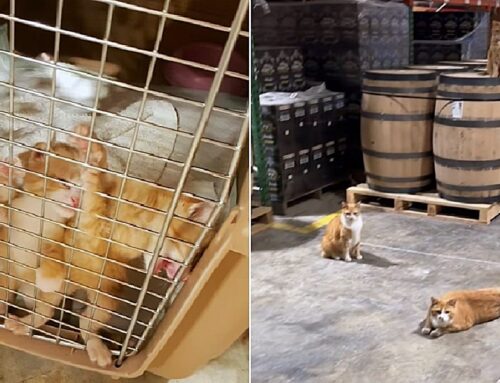The feline Goddess, Bastet, or Bast, was worshipped for thousands of years in Egypt. But her popularity reached a high point when the pharaohs ruled from the city of Bubastis during the 22nd Dynasty. (943 BC) It was also a time when life with domestic cats was growing in popularity.
Today, what’s left are ruins near the city of Zagazig, not to be confused with our own Zig Zag, worshipped in the House of Cole and Marmalade.
“Zig Zag is just lion around all day… get it?! 🤣🦁😺,” shared Jugg and Zig Zag.
Zig Zag in a cozy cave via Facebook/Jugg and Zig Zag
The Temple of Bastet
During the 22nd Dynasty, the pharaohs built and added to the Temple of Bastet in the southeast Nile Delta. It was considered magnificent by ancient accounts. But today, the Temple is mostly rubble.
For example, Greek historian Herodotus described the Temple of Bastet like this:
“In this city, there is a temple very well worthy of mention, for though there are other temples which are larger and build with more cost, none more than this is a pleasure to the eyes,” Herodotus wrote in the fifth-century B.C.
Artifacts from Bubastis and ancient Egypt via YouTube
To the Greeks, Bastet was associated with Artemis, the goddess of wild nature. Thus, followers of Bastet and Artemis came to the Temple in Bubastis.
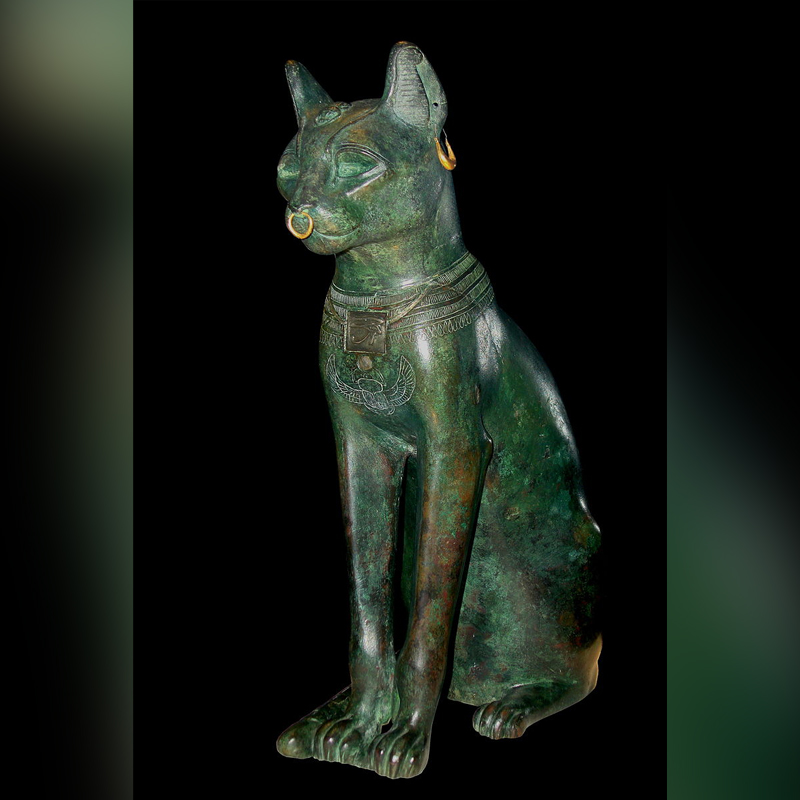
Gayer-Anderson Cat via Wikimedia Commons
In Egypt, domestic cats were seen as sacred, earthly manifestations of the goddess Bastet and worshipped as such. Cats and many other animals were so sacred that Egypt’s enemies eventually exploited this in battle. At the Battle of Pelusium, the enemy came into battle with live animals and symbols of Bastet on their shields. In effect, they forced the Egyptians to surrender rather than harm the sacred animals.
Killing a cat was punishable by death, and when cats died, people grieved, shaving their eyebrows. Then, they prepared elaborate burials by mummifying the cats with sacred symbols like the scarab.
Visitors would travel to Bubastis where there was a large cemetery for cats, particularly during an annual festival. There, they would dedicate the cats to the goddess who offered protection in the afterlife.
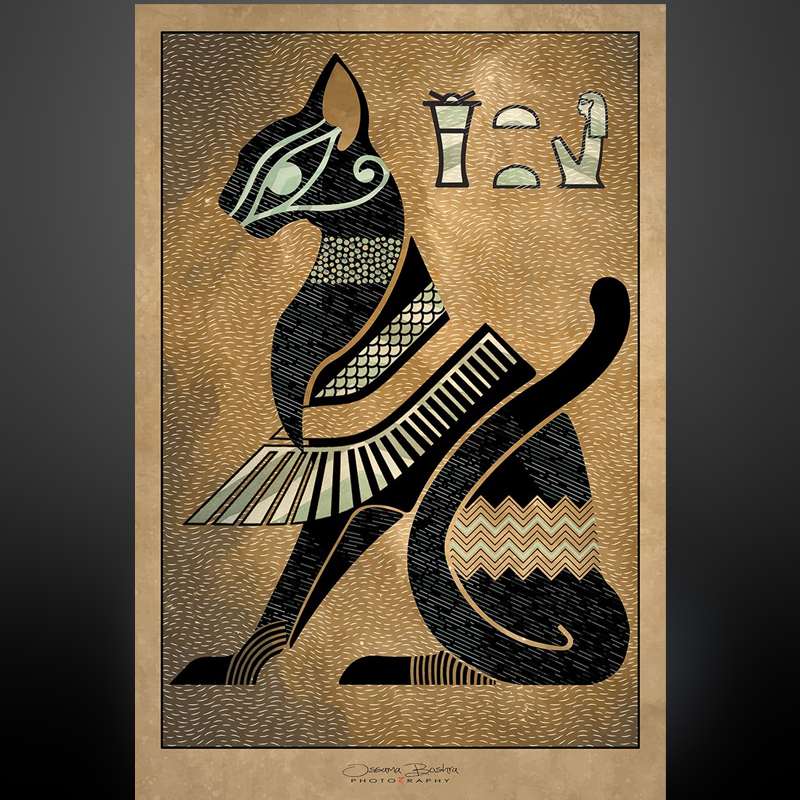
Image of Bastet by Ossama Boshra via Wikimedia Commons
Annual Feast to Bastet
Each year, the festival of Bubastis was an enormous, joyful affair as people floated down the Nile to enjoy a feast to Bastet as described by Greek historian Herodotus. As many as 700,000 visitors came to enjoy the feast, playing music, singing, and drinking wine. Women were free from all constraints during the festival and enjoyed relative equality with men in ancient Egypt.
“The festival of Bubastis was the most joyous and gorgeous of all in the Egyptian calendar,” Herodotus wrote.
As noted, an important part of the festival was the delivery of mummified cats to the Temple. Over 300,000 were found when the Temple was excavated starting in 1887.
Video by World History Encyclopedia about Bastet:
How Domestic Cats Influenced Depictions of Bastet
Bastet’s peak popularity arrived when people began living with house cats, generally described as “domesticated,” although we know better. Cats drove away rodents and poisonous snakes and decided to allow people to bask in their presence, which they still do today.
During this time, people celebrated Bastet’s gentler feline associations like fertility, womanhood, protective ointments, and the home over ancient fearsome, war-like leonine deities.
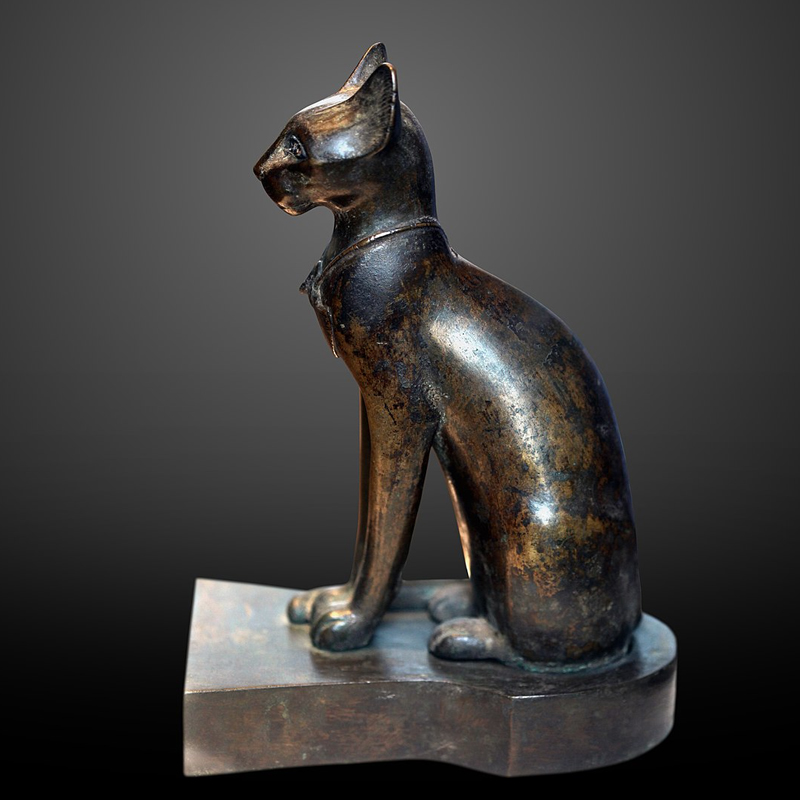
Image of Bastet by Rama via Wikimedia Commons
One such fearsome goddess was Sekhemet. While she was nurturing and protective, she could be ferocious as a lion when necessary. Similarly, the earliest feline goddess, Mafdet, was associated with justice and execution.
“Bastet’s feline associations began to change around the same time as cats (known as miu or miit—he, or she, who mews) were being domesticated in Egypt. Bastet became more closely linked with nurturing and protective aspects, while the mighty lion-headed goddess of war, Sekhmet, took on the characteristics of ferocity and vengeance. From the second millennium B.C., Bastet’s appearance became less leonine, and she was consistently depicted as a domestic cat with a woman’s body,” wrote National Geographic.
Interestingly, people were sometimes named after cats, Miut and Miit, Ta-mitt (female cat) and Pa-mitt (tom cat).
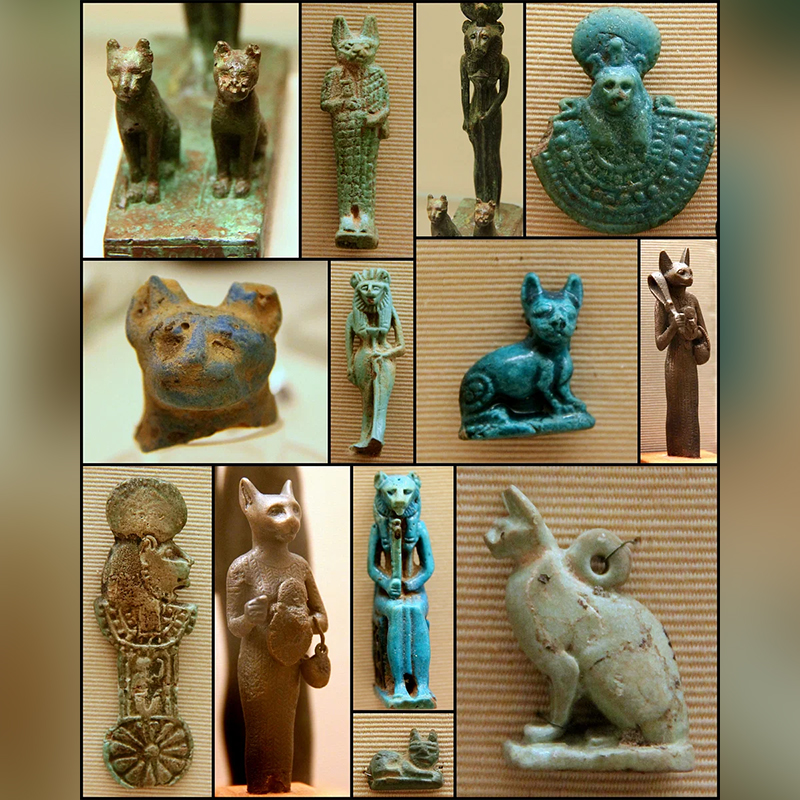
Image by Kotomi Yamamura (CC BY NC-SA)
Although Bastet appeared like a house cat, early texts described her as both nurturing and a “terrifying avenger” of justice. She is often seen holding a rattling instrument called a sistrum like the Goddess Hathor, also found at the Temple of Bastet and similarly associated with Sekhmet. Thus, all are directly related and considered different aspects of one another. But as time went by, people enjoyed the softer aspects of the domestic cats they knew and loved.

Depictions of Bastet holding the sistrum instrument. Images via Wikimedia Commons
Although Bastet’s protections are associated with childbirth and women, she protected the whole family. So, she was popular with everyone from all walks of life, like house cats today. If cats had their way, they they would probably like us to make up for lost time and resume worshipping them right away!
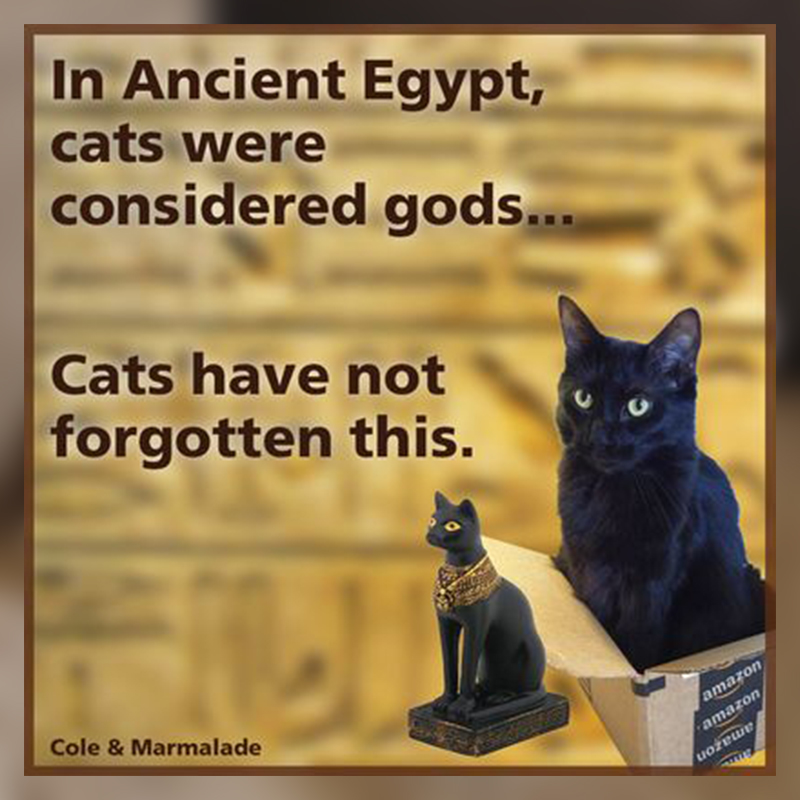
Images via Facebook/Cole and Marmalade
Video about Bastet by New Historia:


